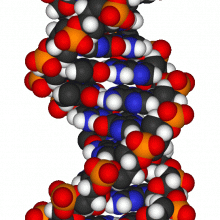What does non-coding DNA do?
Ever wondered what all that junk in your DNA trunk is doing? Find out in this QotW! Plus, we ask: what's the point of two sets of organs?
In this episode

00:00 - What is the purpose of non-coding DNA?
What is the purpose of non-coding DNA?
We put this to Julian Huppert, Member of Parliament for Cambridge and lapsed academic, formerly working on genomics.... Julian - Well, there are various ways of thinking about it and we're still trying to understand some of it. In some ways, the coding sections are the recipes for the proteins that we have. The genes and the non-coding DNA are very important in saying how much of this should be there, when is it turned on, when is it turned off. All of those controls are hidden in the non-coding sections of DNA. There are some other bits which are old things which we don't really use such as genes which were useful a few million years ago, we still have bits lying around. Also there are some bits which really are junk. They are viruses that have crept into our genome over time.
What I used to work on was something called the G-quadruplex. DNA of the right sequence can form four stranded knots. These can act as off-switches which stop the gene from being active. It started off as an interesting theoretical curiosity. We actually found that almost half of all human genes seem to have these switches in a way that could be playing a role in turning them on and off. In particular, most cancer genes had these little structures which form little knots at the beginning of the gene, marking it as off.
Diana - So-called junk DNA can be acting in other ways as on/off switches, packaging for coding DNA or instructions on how that DNA is unpacked. Imat faal said on the forum that DNA can have another use altogether, finger printing for identification.
- Previous Cocaine: Chemistry in its element
- Next Dinosaur Inspired Aircraft





Comments
Add a comment